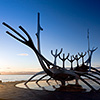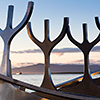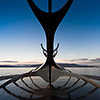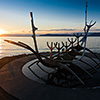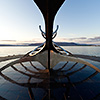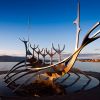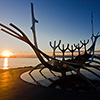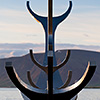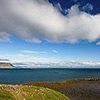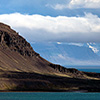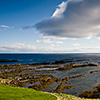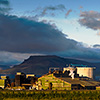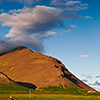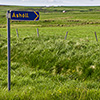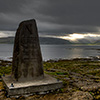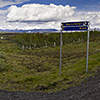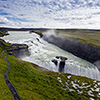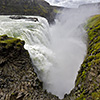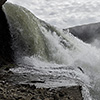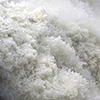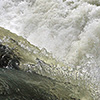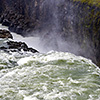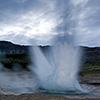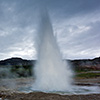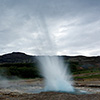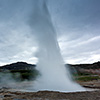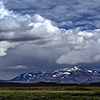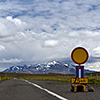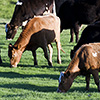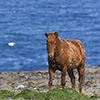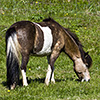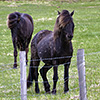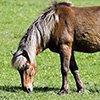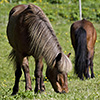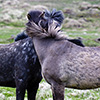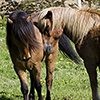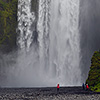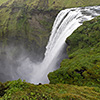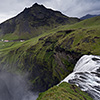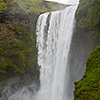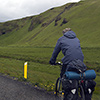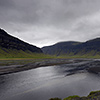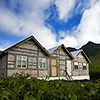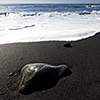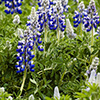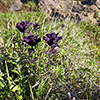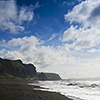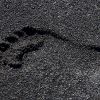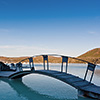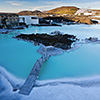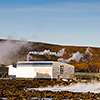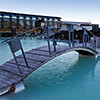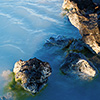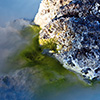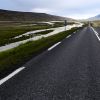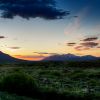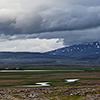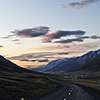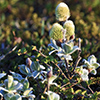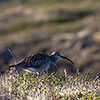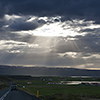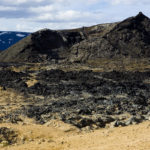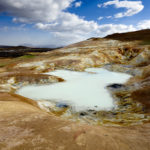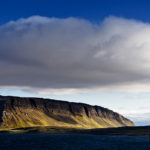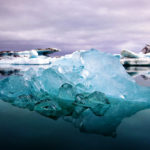Urban Rurality – Reykjavik and the South of Iceland
It really doesn’t take much time to drive through or around the World’s most northern capital. It is even not a problem to walk through entire Reykjavik. By western definition Iceland’s heart in terms of civilization would beat in the South and South-West; an area counting 200.000 inhabitants and home of the Golden Circle. It is the only place on the island where the ring road becomes two-lane and where you can get stuck in a traffic jam. A perfect place to unwind from suchlike daily routine is close to the international airport, where you can take a bath in the waste water basin of a geothermal power plant.
The Icelandic capital has quite some sights worth to see. One of the most seen and photographed sights are the conspicuous and austere tower of Hallgrímskirkja, the sheep’s head drive-in to have some Svið as well as the steely Sólfar monument. You hardly become tired of looking at the curved lines of the latter one; even never become tired of taking photos of it :-)
Above all the South as well as the South-West are Iceland’s most expensive regions. There you can be easily asked to pay 26 Euro for a pizza, while still having the frog in your throat as the last beer cost incredible 7 Euros. Iceland’s real purchase power is high; inflation-adjusted and after deducting energy and rent costs, the small island ranks at number 4 in the world rankings. Germany is ranked on position 17. Almost everywhere that financial advantage is easily noticeable; for example pretentious jeeps and of course high prices for all things called gastronomy and accommodation. From Reykjavik to Vik you can easily spend 30-40 Euros for a night sleeping in your own sleeping bag; excluding breakfast of course.
Reykjavik is also the starting point for a tour called Golden Circle; a route that leads the tourists to all major sights of the country. The name giver of all hot springs, Geysir, is on the bill as well as the regularly erupting Strokkur and the thermal spring of Blesi. Furthermore it includes the Thing site of Þingvellir and the majestic Gullfoss.
The Golden Circle route is noticeably touristier than all other regions of the country. At the Geysir you even meet the usual suspects of merchandising, that is: Geysir the postcard, Geysir the baseball cap, only missing Geysir the breakfast cereals. However, it is quite some spectacle when the regularly erupting Strokkur is grumblingly gurgling deep in the bowels of the earth; then the water gives ground for a short moment and comes back in an explosion. Its hot fountain sometimes even reaches the 20 meter mark.
Coming from the more or less mossy North, then you surely see a change of vegetation in the Southern parts of Iceland. When riding on ring road #1, especially between Reykjavik and Vik, lush meadows and stock farming are dominating the scenery. Beside roomy paddocks and lots of Icelandic horses you will also see herds of cows and naturally grown trees. The latter ones are something that is hard to find in the Northern parts of the island.
Driving along southern ring road #1 there are two further chances to get in touch with beautiful and accessible waterfalls. On the one hand that is the delicate Seljalandsfoss, which is clearly visible even from far away, and further south the bigger and lush Skógafoss. Both waterfalls are located more or less half-way of the distance Reykjavik-Vik. By the way, the razor-sharp cliffs at the coast of Vik are trolls waiting for attacking a ship. The cute little town at Iceland’s southern tip is famous for its long and wide black beach. Its sand is even finer than those of many other white beaches. In general Iceland has lots of black beaches. On the contrary naturally white beaches are an exotic; you can find one at Rauðisandur on the Látrabjarg peninsula.
Speaking of food and driving. The petrol stations in bigger towns are quite often also kind of a Mecca for all things called food and beverages. Unfortunately on that point Icelanders prefer having it the American way… That is: hamburgers and hot dogs playing the chief part, supporting actor is fish, but regarding taste deep-fried to death. The most fuel stations are solely working automatically and to be paid by credit card only. It works easy: insert your credit card, enter its PIN, then key in the final amount and finally the number of the petrol pump. Done. There are only few petrol stations where you can pay cash, and these are basically located around Reykjavik and the bigger southern towns like Selfoss.
South-western of Reykjavik and almost at the gates of Keflavik airport another gem of Iceland can be experienced. The locals call it Bláa Lónið, the rest of the world knows it under the name Blue Lagoon. Technically seen people are bathing in the waste-water of geothermal power plant Svartsengi. The lesser content of silicic acid makes the water reflecting sun light bluish. Taking a bath in the Blue Lagoon’s sulphuric waters demonstrably allays psoriasis and other skin diseases, while the skin is provided with different mineral salts. For a face mask you can get yourself sulphuric mud from the lagoon’s ground. It is not a must though, as when having a closer look at this mud you will surely discover hundreds of human hair. The only hope is that these hairs are originating from one’s head…………. Much more pleasant is the silicate face mask paste provided by the Blue Lagoon team.
Near the cute fishing town Stykkishólmur on the Snæfellsnes peninsula is Bjarnarhöfn, the home of farmer Hildibálður. He is famous but also notorious for a very special Icelandic delicacy called Hákarl, the Icelandic paraphrase for fermented and well-hung Greenland shark. Paraphrase? It is more or less quite an euphemism. Since that shark being always bycatch, Hildibálður is on the spot whenever fishermen catch a http://en.wikipedia.org/wiki/Greenland_shark. Then he takes the fish in charge and brings it to his Bjarnahöfn farm. There he has always a quick bite on offer for brave and curious people. He is pretty tickled pink when he sees the most different reactions of the people. Reactions that reach from simple apathy to consternated grimaces, most of them taste or smell-related. Meanwhile Hákarl (pronounced: Haukarl) can be bought canned as well. Paying 30-40 Euros for simply trying a small piece is a bit too much though.
You only have to imagine a piece of tighter gelatine that you put in a corner at Berlin’s infamous Zoo train station and let all bums around have a generous piss on it during the next 3-4 months, then move it towards your oral cavity. Slightly slimy, a little bitter halfway swallowed down and grossly smelling like an older urine sample with a gentle fish note, that is how you can imagine its special taste. Closing the nose while having a first bite of Hákarl is not a problem, the really disgusting thing is the shattering aftertaste though. It’s an emetic cute little something making trouble in one’s throat and something that definitely has to be drowned in Brennivin, LOTS of Brennivin. After Hákarl indulgence you shouldn’t really think about making new contacts, not to mention meeting a nice girl even on the day after. If in Central Europe somebody howles with pain because of a small touch of garlic in food, then that person will escape from Hákarl with tears in eyes before it got closer than 500 meters. Of course the intensity of Hákarl’s “taste” varies depending on how many metabolic waste the shark put into his storage.
